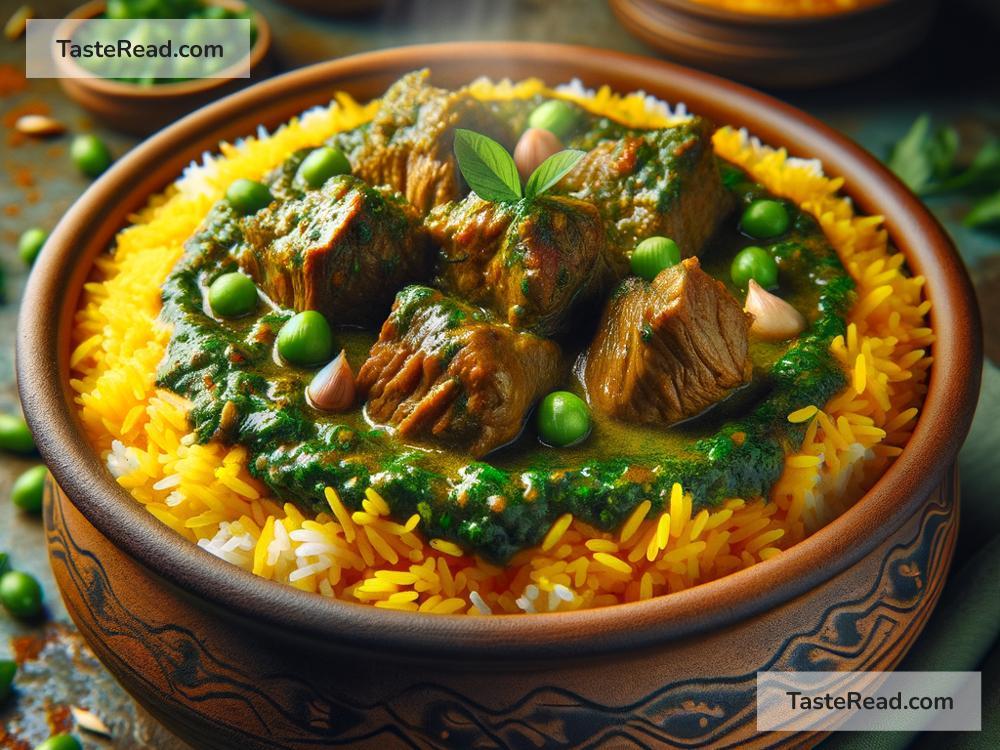Exploring the Story Behind the Iranian Ghormeh Sabzi
Iran, a country steeped in history and culture, has much to offer to the world, especially when it comes to its culinary delights. Among its treasure trove of mouth-watering dishes, one, in particular, stands out for its rich flavor, fascinating history, and cultural significance: Ghormeh Sabzi. This traditional Persian stew, which cleverly combines herbs, meat, and beans, not only tantalizes the taste buds but also carries with it a story that traverses centuries.
The tale of Ghormeh Sabzi begins over 2,000 years ago, positioning it among the oldest dishes in Iranian cuisine. Its name translates to “Stewed Greens” in Persian, which is an apt description of this herb-heavy dish. The “ghormeh” refers to the method of frying the ingredients, especially the herbs, before stewing them slowly to perfection, while “sabzi” signifies the greens or herbs that give the dish its distinctive color and flavor.
The Ingredients: A Symphony of Flavors
The primary components of Ghormeh Sabzi are a testament to the agricultural diversity and richness of Iran. It includes a mixture of finely chopped herbs, such as parsley, leek or green onions, cilantro, and fenugreek leaves. These herbs provide not just color but a burst of flavor that is both fresh and slightly bitter, balancing the richness of the meat.
Kidney beans, or sometimes black-eyed peas, are added for texture and an extra layer of taste. The meat traditionally used ranges from lamb to beef, which is slow-cooked to tender perfection, absorbing the complexity of the herbs and spices. A key ingredient that provides a unique twist to this dish is dried Persian limes, or limoo amani. These limes are boiled and then left to dry, developing a sour flavor that, when added to the stew, imparts a unique tanginess that is characteristic of Ghormeh Sabzi.
The Cultural Significance
Ghormeh Sabzi is more than just a dish; it is a part of Iranian heritage, representing the nation’s history, culture, and the evolution of its cuisine. It is a fixture in Persian celebrations and family gatherings, symbolizing unity, tradition, and the continuity of their rich culture. Serving Ghormeh Sabzi during Nowruz (Persian New Year) or on Shab-e Yalda (the longest night of the year) is common, making it an integral part of Iranian festivities.
This dish also tells the story of the Iranian landscape itself, showcasing the bounty of the land. The variety of herbs reflects the agricultural variety of the country, while the use of dried limes points to the ancient Iranian practice of preserving food. The slow cooking process speaks to a time when meals were prepared with care and patience, qualities that are synonymous with Iranian hospitality.
Preparing Ghormeh Sabzi: A Labor of Love
Cooking Ghormeh Sabzi is considered an art and a labor of love. The preparation starts with the painstaking task of cleaning, destemming, and finely chopping the herbs, a process that traditionally brings family members together. The onions are slowly caramelized to sweetness, the meat is browned to perfection, and the herbs are fried lightly before everything is combined and left to stew.
Each family has its own version of Ghormeh Sabzi, with variations in the herb mix, the choice of beans, or the addition of spices, making each recipe unique. This personal touch adds to the dish’s charm, making it a vibrant mosaic of Iran’s culinary diversity.
Conclusion
Ghormeh Sabzi is more than just a stew; it is a symbol of Iranian heritage, a celebration of its land, and a testament to the country’s rich culinary history. This dish, with its complex flavors and deep-rooted history, offers a glimpse into the heart of Persian culture, inviting us to explore the stories behind the food we eat. Whether you’re enjoying it in a traditional Iranian home, a local restaurant, or attempting to make it in your own kitchen, Ghormeh Sabzi is a culinary journey that is not to be missed, offering a taste of Iran that lingers long after the meal is over.


